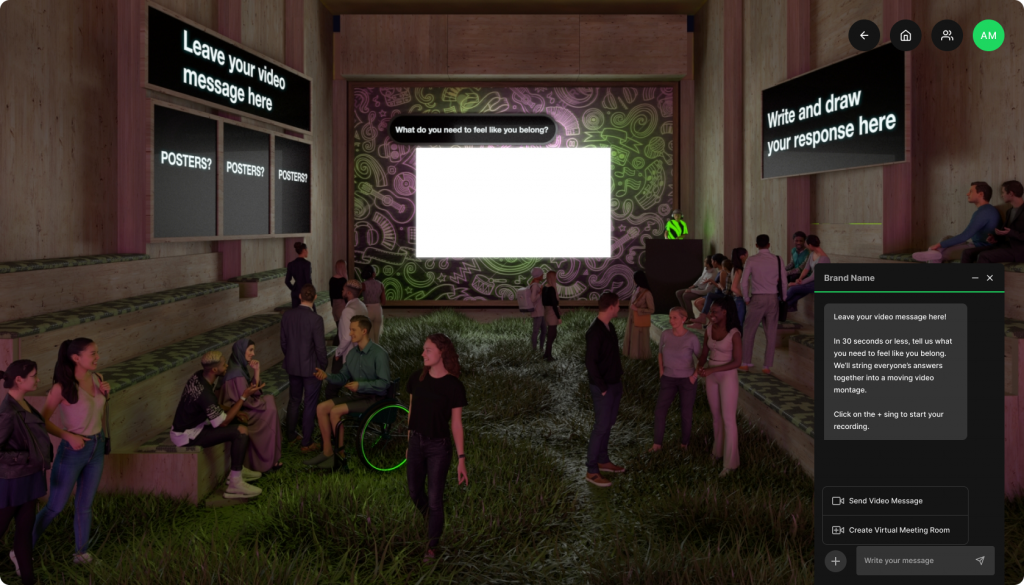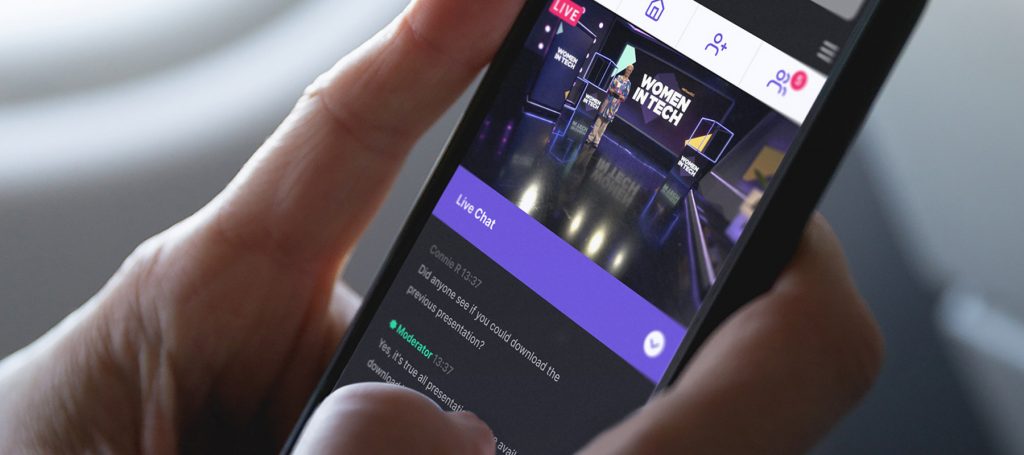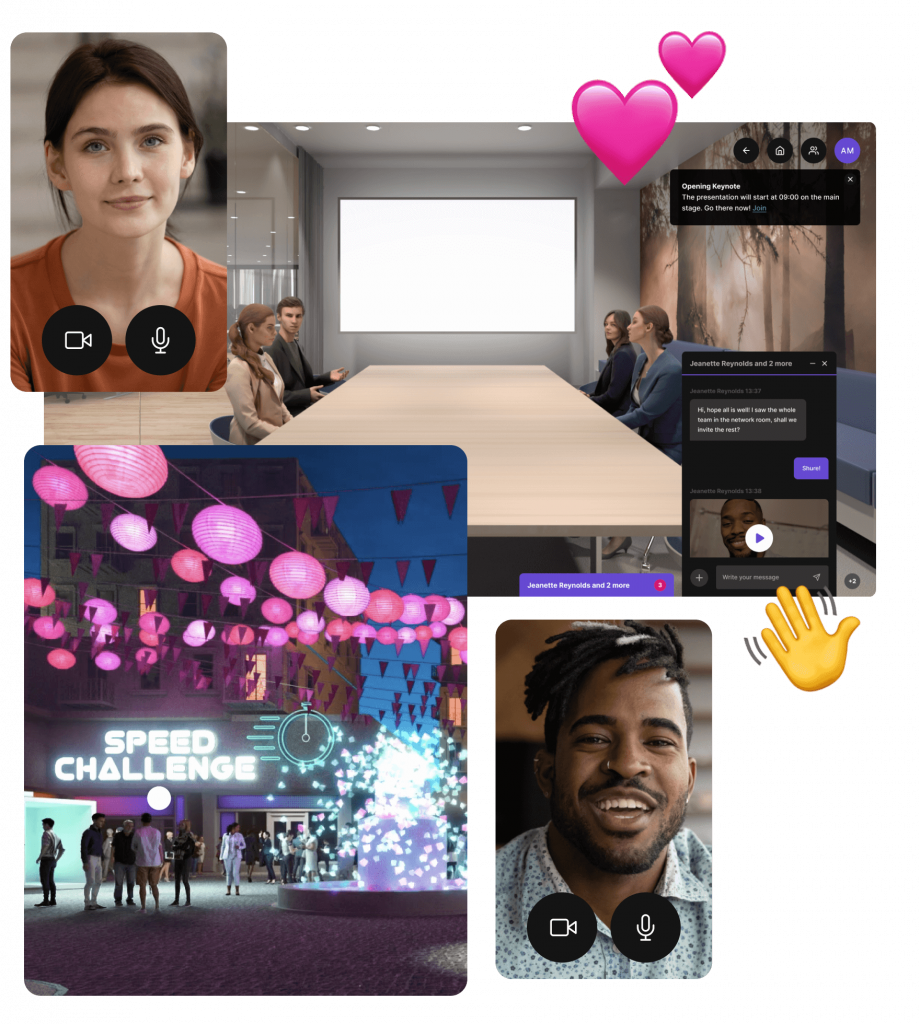
Hybrid. Re-Explained.

After the pandemic, the term hybrid has become a word often used in briefs and as a term for the events of the new age, hybrid feels like the ultimate mix between the digital and the physical, a cost-effective solution that gives a better effect – is it really so?
To sort out the concepts, we had a conversation with our CEO Mats Mileblad, who’s been observing, shaping and forming the demand for virtual services in the industry for many years.
First, let’s sort out the concepts, what are physical, digital and hybrid?
– Physical is perhaps easiest to define , it is an event that is held live in front of a present audience, of course parts of a physical event can also be streamed to a wider audience or recorded and offered on demand later, eg the stage program – it does however, not for a hybrid event as the event is mainly produced for the guests who are in the room.

Digital is an event that is recorded in a studio or room without an audience and which is then broadcast to an audience that mainly sees the broadcast on their computer or phone, in exceptional cases the audience can gather in different conference rooms or large auditoriums – but there can be challenges keeping interest and motivate leaving the question why? “watch TV together”, You lose many of the interactive elements that make digital events so good. Advantageously, a digital platform can be used to holds much more content and can create an enhanced experience in addition to the main broadcast itself.

– Hybrid is the slightly more difficult mix , the hybrid event is actually aimed at two different target groups – one digital and one physical, which means that they must have two different agendas but that they overlap at certain times – it will not be so fun, for example for someone sitting at home watching while the others eat lunch, then something else must be offered. Hybrid can also be that you have an event in several different venues and stream parts of the content to different locations and in this way make an intertwined event between different geographical places, then the target group is more similar but it is more demanding on the organizer.
Can a hybrid event then be cheaper to produce, for example if you have guests from several different countries?
– That is the big question, it probably depends mainly on what you want to achieve with the event. If it is mainly to spread information, for example a monthly meeting, a conference or an education, it can work well to gather local staff in one place and stream out to other staff or local units from there, something that can afterwards be combined with a simpler joint local activity , then the cost can be lower. If it is more about culture-building activities, anniversaries or product launches, it is difficult to implement both digitally and locally at a lower or even the same cost as if it were to take place in one place, even if it presupposes that visitors enter. If you want to make a larger saving, however, a purely digital event is probably the most cost-effective, even if you invest in a more extensive production.
When should you use each type of event?
– The physical is of course often preferred to create a sense of belonging , work creatively or to celebrate, or where the physical really adds an additional dimension, such as a product launch that is more difficult to recreate digitally if, for example, you want to test drive a car. If the entire target group is in one or a few places where travel is easy to coordinate and can be carried out in a sustainable way, the physical meeting is usually the best option. Then it can also be combined with an activation towards other target groups, for example consumers.
– Digital provides the opportunity to meet more often , if the target group is in several different countries or for example consists of many local units, digital is a very effective alternative that allows more people to participate in monthly meetings or presentations. If the event is very presentation-heavy, many believe that it is an advantage to be able to participate from home, it reduces travel time and climate impact and at the same time makes it easier for visitors to get together with their private lives. The cost of a digital alternative is usually significantly lower even if you make a more lavish production and use a more advanced platform to share more content and increase interactivity.
– The hybrid is the most demanding variant and places high demands on both planning and arrangements. A simple solution is of course to stream out the parts that are performed on stage, for example, to those who for various reasons can’t get to the meeting. Coordinating a global event with physical events in several places in parallel, where many will take part in the various parts distributed in different physical locations is a very demanding production if you want to deliver an inclusive and engaging event for the audience. Although in theory it may feel easy to get everyone contribute content, it will be easy for the main production to take place in one place and for everyone else to “watch TV”. The main tip will be to spread out speakers between the different destinations and then have local entertainment for the visitors so that everyone gets an equal mix of live and streamed.
So what will be the recommendation in the future?

– It is becoming more important than ever to think through what to communicate and who the target group is. Local events where the social and tactile are of great importance should probably continue to be held physically, while events towards a more widespread target group and with a more static agenda today can advantageously be held digital and then instead have a higher frequency and reach more people. This also matches how we should think sustainably in the future, it will be difficult to motivate people all over the world for meetings that can just as easily be done digitally and thus save on finances, climate impact and life balance, where local productions do not involve the same strain on the sustainability factors.
Create your Virtual Experience
Create your Virtual Experience with us and see how vVenues can help to strengthen your brand and business.